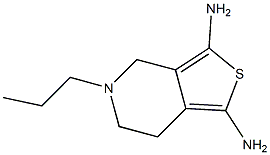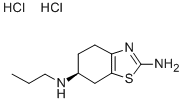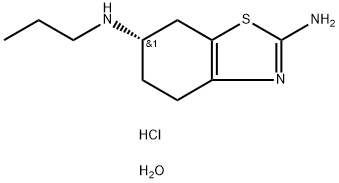Parkinson's disease drugs
Parkinson's disease refers to the destructive and degenerative diseases of the substantia nigra or substantia nigra neuronal cell occurring at middle aged or older population. The pathogenesis is due to the lack of dopamine or due to the excess amount of a protein named "PAEL" in the specific part of the brain. Its main features include progressive bradykinesia, muscle rigidity and tremors with slow onset but then gradually becoming severe. Previous investigation has found that the disease mostly occurs in people over age 50 with occurring more frequently among males than female. The incidence of people over the age of 60 can reach as high as 1%. But in recent years, the incidence of Parkinson's disease in China has been increasing very rapidly, which can be partly attributed to factor of aging of the population, but should be more related to those cases which had gotten misdiagnosed before. From this perspective, it is very clear that Parkinson's disease is easily to get missed from diagnose and can be easily misdiagnosed as cerebrovascular disease, depression with misdiagnosis rate being as high as 47.6% in the major cities, so early detection of the disease is very important.
So far, the cause of idiopathic Parkinson's disease is still not entirely clear. From the current research point of view, it has close relations with various factors such as aging, family genetics, environmental pollution and electromagnetic radiation (but there are also studies suggesting that genetic factors don’t plays a major role). The risk of incidence for siblings is 6.7 times as high as that in the general population. If parents have Parkinson's disease, the risk of children of getting this disease is 3.2 times as high as the general population. People who have high incidences of being exposure to toxic metals, pharmaceuticals, pesticides and hydrocarbon solvents (including halogen, a variety of fragrances agents, resins, herbicides, acetate salt, etc.) are more likely to develop the disease. People who often administrate drugs such as metoclopramide, reserpine and phenothiazines drugs, antidepressants, as well as male suffering from long-term constipation are also easy to develop Parkinson's-like disease syndromes. The incidence rate of widowed people is four times as high as that of widowed. A higher incidence has been observed in military personnel while the lowest incidence has been observed in domestic workers. In recent years, people of 40 years of age who have been suffering from this disease is not uncommon, the incidence rate accounts for about 20%. It has also been found of that a lot of patients over 20 years of age have developed this disease.
The greatest harm of the Parkinson's disease is a serious decline in the patient's quality of life. Life can’t be taken care of by those patients themselves, being able to lead to all sorts of complications as well. Currently the disease is difficult to cure with most of the main treatment being focused on alleviating the pain, slowing the rate of progression and improving the quality of life of patients.
Parkinson's disease belongs to the category of "older tremor syndrome", "in vivo wind" or "Zhen Zhen" in Chinese pharmaceuticals. Chinese medicine believes that this syndrome occurs mainly in the elderly, mostly belonging to lack of Qi, lack of blood for raising physique, “Qi” is not warm and muscle is lack of nutrients; or being because of un-scavenging poison at the late stage of stroke which causes damage to the “Qi” and blood as well as body fluid, or because of fierce emotions, depression and thus burning, burning of Yin-Blood and thus tendons dystrophy. In the process of differential treatment, it is often divided into liver and kidney weakness, blood and “Qi” deficiency, spleen phlegm, obstruction of collaterals by blood stasis, syndrome of stirring wind due to phlegm-heat and some other types
Clinical manifestations
(1) Manifestation in early stage:
1; tremor; In the static state, it starts from one side of the body, then gradually expanding to the ipsilateral lower limb, contralateral upper limb, bilateral limb, head and neck, jaw, chin, lips and tongue with small amplitude. Typical persons, at static stage, exhibit pill-rolling like movements that can be temporarily controlled. A minority of people has relative substantial amplitude with the action also containing tremor. The tremor can be relieved or disappear. After sleeping, tremor can disappear but with nervousness which increases upon being emotional.
2; stiffness and rigidity; Almost all patients have a feeling of stiffness and rigidity with palm being not easily to bent back and the fingers being difficult to perform accurate movements such as tying the shoelaces, severe illegible and smaller writing and frequent pauses upon continuous rotation movement. Rigidity can also be systemic. When patients do joint passive activity, they can feel even hindering force which called by physician as the "lead-pipe rigidity." If the patient is accompanied by tremors, the evenly felt hindering force during passive physical activity can intermittently pause at the same time such as gear turning with the muscle rigidity being more significant especially upon cervical, elbow, wrist, shoulder and knee, ankle activity.
3; Movement disorders; this appears as the difficulty in the startup of movement and the slowing down in the speed such as difficult start, failure in taking a step during walking, small step distance, slow walking speed, flurried gait or pediment gait, difficult in turning and easy fatigue upon repetitive motion as well as non-autonomous feeling upon walking. It can also exhibit as a diverse of motor deficiency such as the lack of facial expression, little blink, slower speed of speaking, being unable to swallow food, constipation, and "mask face" and so on. It is also reflected in difficulty in changing positions during movement for example unable to salute during walking, unable to buckle the buttons when answering questions and hard to get on/off the bed, stand up or sit down.
4; balance disorders. Unsteady gait, easy to fall.
When it is found of one or two above syndromes in one unilateral limb, it is the time of taking into account of the possible occurrence of this disease.
(2) When this disease develops to the mid- or late stage, the patient get various of symptoms such as monotone speech, low voice low, urination and defecation dysfunction, increased sweating, seborrhea and orthostatic hypotension, autonomic dysfunction, and psychiatric symptoms and dementia .
Diagnostic points
Parkinson's disease:
1. It mainly appears as resting tremor, increased muscle tone, slow motion and so on with first symptom with tremor as the most frequently case. The typical manifestation is the resting tremor with a rhythm of 4 ~ 6Hz, the "rubbing pill-like" action exhibiting between the thumb and flexion index finger with the symptoms reducing or disappearing upon random movements, being more severe upon tension and disappearing upon going to sleep. Followed by walking disorders, muscle rigidity (lead-pipe stiffness or cogwheel rigidity) and bradykinesia (mask face symptom and micrographia, etc.). Symptoms often start from one side of the upper limbs, gradually extending to the ipsilateral lower limb, contralateral upper limb and bilateral limb. There are also cases in which the symptoms start from one side of the lower limbs. However, cases in which the symptoms start simultaneously from lower limbs of both sides were very rare.
2. Function investigation of dopamine transporter, dopamine receptors and DOPA as well as SPECT, PET imaging will facilitate the early diagnosis of Parkinson's disease.
3. CT, MRI can help rule out the Parkinson’s syndrome with similar Parkinson manifestations caused by other brain diseases.
Secondary Parkinsonism:
1. Can consult long-term exposure to toxic substances, brain infection, stroke, head trauma and other medical history.
2. In addition to extrapyramidal symptoms, there are also manifestations including damage in pyramidal system, cerebellum and brain stem as well as autonomic nervous system which can be used for distinguishing.
3. Blood, urine, cerebrospinal fluid, imaging inspections can help to distinguish.
Treatment Points
1. Drug treatment: for the treatment of early Parkinson's disease patients, we can first apply neuroprotective treatment to delay the development of the disease. For living and working of patients under the impact of the disease, we can choose different drugs to control the symptoms of the disease according to actual conditions.
2. Surgical treatment: indications are severe movement disorders with all drugs being not capable of improving the quality of life. Surgical methods include pallidotomy surgery and subthalamic nucleus deep brain microelectrode stimulation surgery. Currently, people are more inclined to deep brain microelectrode stimulation.
3. Cell transplantation: cell transplantation, mostly refers to the transplantation of the substantia nigra cells in allogeneic embryo into the patient's striatum, this can proofread the DA neurotransmitter deficiency, alleviate the motor symptoms of Parkinson's disease. But the problem is that there is limited source of donor with uncertain long-term effect as well as immune rejection. Thus, it has been not yet widely applied in clinical practice.
4. Rehabilitation exercises include: exercises of tone and voice, exercise of facial muscles, exercise of hands, limbs and trunk, and respiratory muscle relaxation exercises, gait and balance exercise as well as posture recovery exercise. This, as an adjunct approach, can also play certain role in improving the symptoms. The care of late-stage unmobilizable patients should be strengthened to reduce the incidence of complications.
5. Other: For Parkinson's syndrome patients, while taking symptomatic treatment, we should also positively treat the protopathy.
- Structure:

- Chemical Name:Pramipexole
- CAS:104632-26-0
- MF:C10H17N3S
- Structure:

- Chemical Name:Pramipexole Impurity 4
- CAS:104632-25-9
- MF:C10H19Cl2N3S
- Structure:

- Chemical Name:Pramipexole dihydrochloride monohydrate
- CAS:191217-81-9
- MF:C10H20ClN3OS